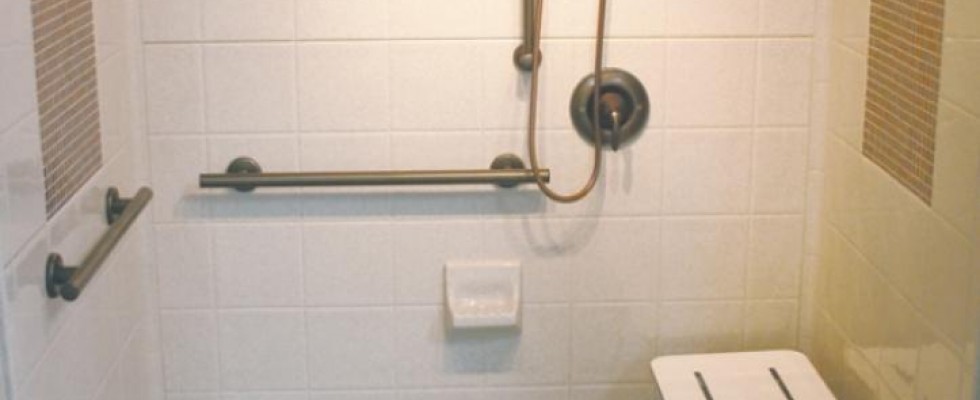
Universal design is just that: Design that can be used by everyone. Universal design gives designers and homeowners more flexibility than the basic ADA guidelines, while ensuring that all ability levels are served. If you're looking to create a universal design bathroom, keep two things thing in mind: Anyone who goes into the space can use it, and placement is key. Follow these tips. Grab bars—Many grab bars can aesthetically enhance a space and serve multiple functions, with the towel rod, toilet paper holder and shower slide bars all serving as grab bars when correctly placed. Multiple showerheads—Placing showerheads at various heights allows for users of almost any ability to comfortably bathe. Semipermanent thresholds—Showers with a removable threshold accommodate all users and can be changed out easily. Removable silicone lips can be cut away to provide a zero-threshold entrance, then replaced if no longer needed.Contrasting colors—Color is a great factor in bath aesthetics but it also affects how the user sees the space. Provide contrasting colors in the shower—and on the walls and floor—to allow those with poor visibility to discern one space from another. Toilets—Install 18-inch toilets to accommodate all ability levels comfortably. Wall niches—Shelving units and seating can provide extra assistance inside the shower, if properly placed. Keep in mind where the shower valve is located so that someone can access it no matter if they are standing or sitting. Lighting—Access to lighting is just as important as illumination. Toggle switches can be used easily by all ability levels, especially if conveniently placed for any user. Door levers —Knobs can be difficult for some users to turn. Installing door levers ensures usability and access for everyone. Countertop height—Although countertop heights have increased in recent years, a truly accessible bathroom must take all users into account. Installing standard-height counters can ensure universal functionality. Door and hallway sizes—Larger door openings and hallways—ideally 32 inches wide or more—can easily accommodate most wheelchairs. Universal design doesn't simply mean accessible. Rather, the term encompasses smart design that accommodates every single person that enters the space.
